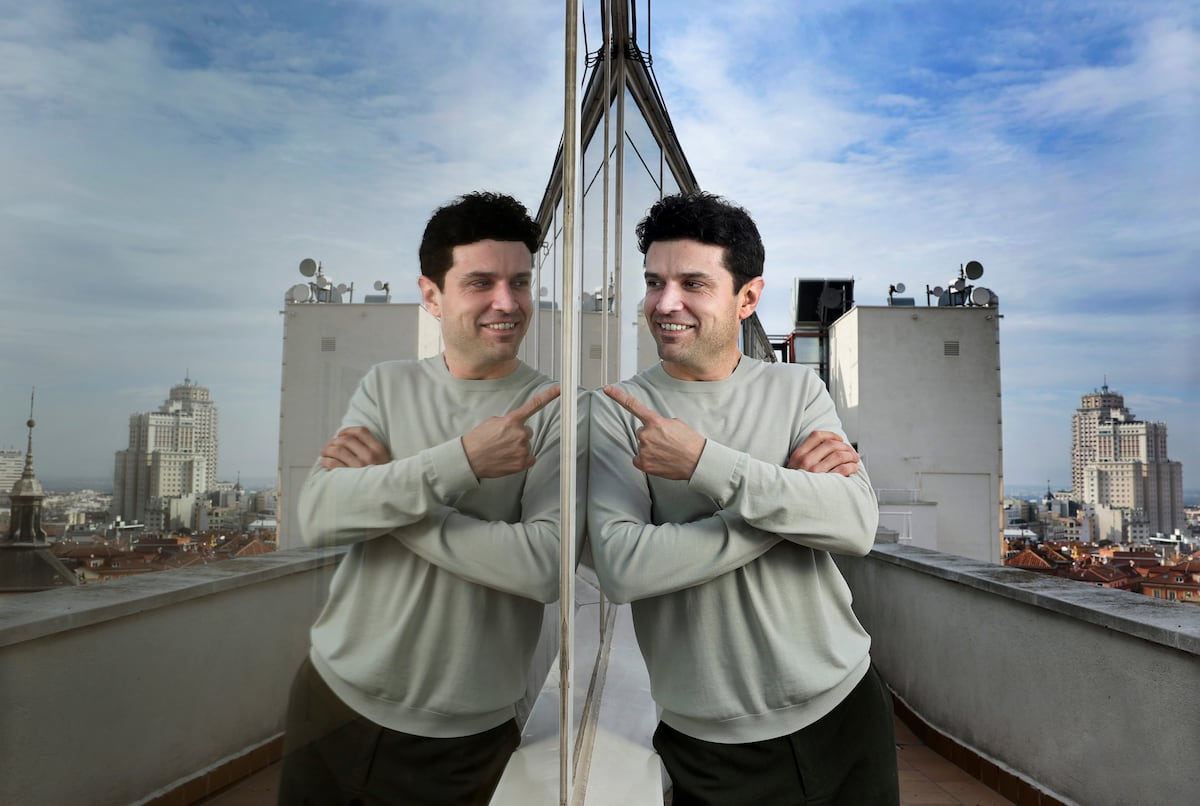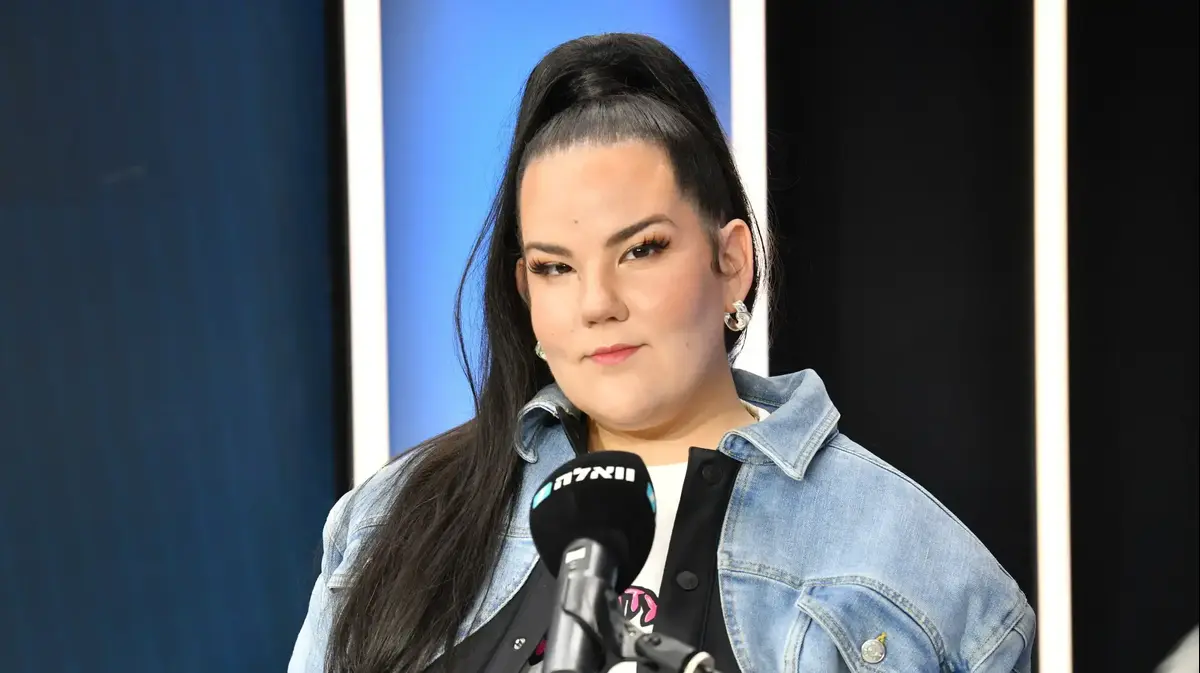It is 1997 and the artist Miguel Calderón has convinced a taxi driver in Mexico City to take him to Tijuana, 4,000 kilometers to the north, more than 30 hours by car if you drive non-stop to the border with the United States.
They have been in the vehicle for a while and make a stop that Calderón registers with his lens: the taxi driver is turned towards the arid mountains and forms a perfect arc with his urine.
Behind the driver, the green Volkswagen in which they move.
The meter has not stopped running.
They get back on the road.
Calderón is trying to convince the man that contemporary art is of some use.
"Explain to me, what is your intention?" the taxi driver told Calderón, who was then 26 years old.
It was a long trip and the artist told him that since he was a boy he had an interest in “going beyond drawing”, that “art is more than that”.
"I was telling him arguments, but I didn't get it and he said that she was a blowjob," Calderón admits.
“But we empathize.
In the end he gave me the meter, which was my favorite part.
I was interested in showing a glimpse of what happened, this photo of him peeing on a very dangerous road called La Rumorosa, ”he says.
The photo hangs on one of the walls of the Tamayo Museum and next to the photo is the taximeter, which is still running.
The photograph that Calderón took of the taxi driver who took him to Tijuana, hung in the Tamayo Museum. Aggi Garduño
Calderón was born in Mexico City 51 years ago.
During the "very complicated" divorce of her parents, she found "a refuge" in the drawing.
She later obtained a scholarship to study Plastic Arts at the San Francisco Art Institute and settled in California.
“Every time I came to Mexico I found that [to exhibit] you had to meet this or that person.
The cronyism and the compadrazgo... Things that I hated and I still hate”, says Calderón.
Then he co-founded La Panadería together with Yoshua Okón, which would also end up becoming another of the names of contemporary Mexican art with the most international projection.
That talent incubator had its first headquarters in a borrowed room in the Narvarte neighborhood and later moved to La Condesa.
He and his friends read poetry, exhibited, organized concerts: “Things that didn't have so much room in this thing of painting and sculpture, which was predominant.
It was a strong initiative that generated conflicting opinions, many people criticized us”.
His complete
curriculum vitae
can be seen in a giant print on a trampled and dirty carpet in one of the rooms of the Museo Tamayo, which houses the exhibition
Materia estética disponible.
The exhibition, a review of her work curated by Mariana Mañón and Taiyana Pimentel, was previously shown at the Museo de Arte Contemporáneo de Monterrey and will be on view in Mexico City through March 5.
“For me the profession of the artist as such continues to be strange.
I clearly know that I have a trade: I know how to paint, I know how to take photos, I know how to make a film, I know how to edit, I believe in the trade and I don't deny it.
I have to live off it because that's what I do.
But the art in my life has had the function of exorcising demons”.
His disagreement with the world he inhabits, that of art, is repeated in works such as
Walk the walk
, a small fridge with a transparent door that would stink if it were open.
Inside, in 1998 the artist placed old tennis shoes and pieces of cheese that have rotted.
"A reference," he says, "to art fairs."
Calderón recently located this work at the home of a collector who had it abandoned, ready to be discarded.
On another wall hangs
Vómito postmoderno
, the self-portrait that Calderón signed in 2001. It is night in the photograph and Calderón is arched forward while he spits out a translucent liquid that comes out uncontrollably.
“Many issues related to the world of art make me nauseous, make me uncomfortable,” he accepts.
Two works from the Calderón.Aggi Garduño exhibition
On another wall the work
Moribundo is painted,
which occupies almost the entire wall.
The artist imitated the logo of the mattress store Dormimundo and replaced the brand name with the word
moribundo
, an allusion to the death of museums as institutions.
Calderón printed this work for the first time in 1999. It was precisely at the Tamayo Museum that invited him to participate in the exhibition
Young Enthusiast
.
“Having the opportunity to exhibit here led me to adapt instead of rejecting, to understand the circumstances and to make a work that in the end said what I wanted to say.
It is a very subversive work that I infiltrated in a subtle way ”, he assures.
Calderón uses various media in his work, such as video, photography, sculpture and painting, to continue exploring social and personal territories with a critical and always ironic gaze.
In his production, violence, corruption, sexuality, the city and its inhabitants appear.
In the Tamayo rooms, for example,
Employee of the Month
is exhibited, a series of photographs that Calderón took of the workers of the National Museum of Art while posing as classic paintings from the collection.
or
mutant
, a glass rectangle where fish from the Chapultepec forest swim, “a metaphor that refers to the inhabitants of the city and the conditions in which they live”.
"My work is very faithful to the interaction that it carried out in my daily life, I have the need to do it," she says.
A visitor at the "Available Aesthetic Material" exhibition. Aggi Garduño
Short films such as
Chameleon are also shown
, which is projected in a dark room where the artist has placed the metal perches used by falconers to train falcons.
As a child, Calderón had one of those birds of prey in his house for a year.
He was obsessed and won her in a bet on a vet.
The animal and the bicycles made him feel free within the “very stifling environment” of his family and Mexico City.
His obsession, now, has passed from the animal to the people who train them: "It is an addictive relationship, literally."
He is preparing a feature film that he has been working on for more than 15 years and then hopes to "start something fresher."
“This revision has been very important, above all because I think people did not understand my work”, says Calderón: “It has already been done and now I want something else”.
subscribe here
to the EL PAÍS México
newsletter
and receive all the key information on current affairs in this country


/cloudfront-eu-central-1.images.arcpublishing.com/prisa/474JJ4Z6KZH4PIIAFG2EAAGS74.jpg)






